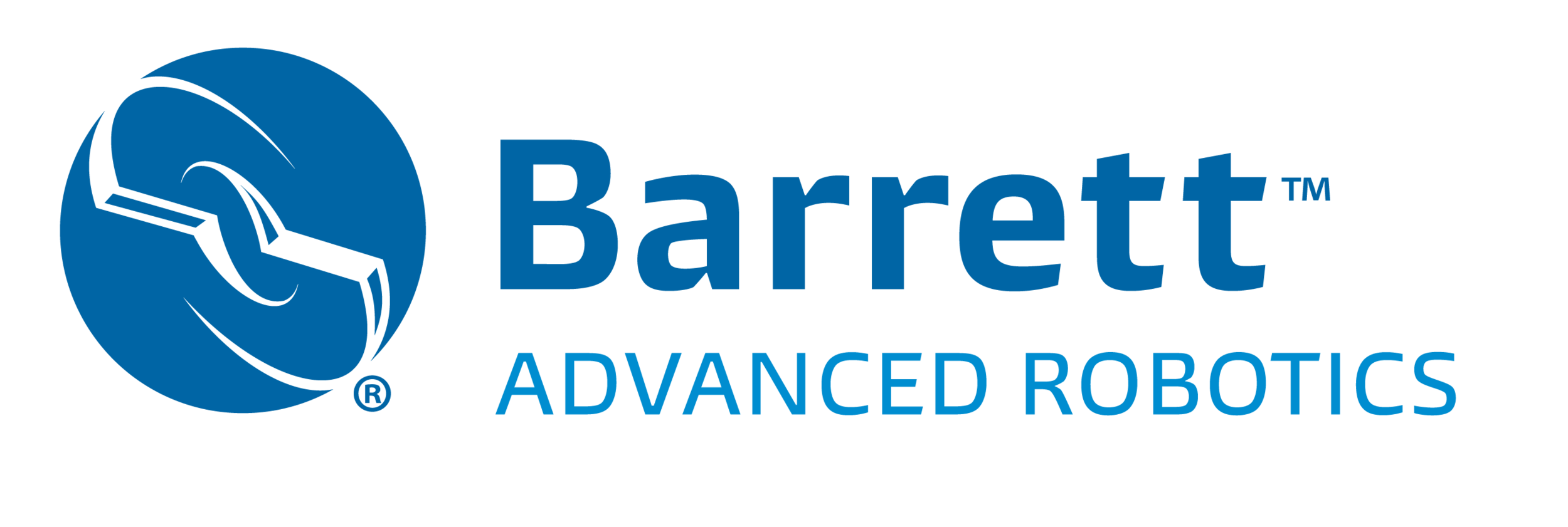Mission to Mars
Mission to Mars
Barrett and Draper Team to Harden the Ultraminiature Puck® Motor Controller for NASA JPL’s Next-Generation Mars Rovers
Daybreak at Gale Crater, courtesy NASA/JPL-Caltech
NEWTON and CAMBRIDGE, MA, USA – A robot equipped for the rocky terrain of Mars isn’t your average robot. It needs space-hardened electronics, the kind that can withstand the harsh conditions of rocketing into orbit, surviving the radiation-filled expanse from Earth to Mars, colliding with the Martian surface, and then operating continuously for months and years to explore the red planet. Such a robotic system needs to be rugged, lightweight, and miniaturized in ways that go beyond the capabilities of the best Earth-bound systems.
Barrett Technology understands the value of lightweight, miniaturized, powerful electronics for robotics. Inside every robot that Barrett produces is a patented power-electronics module called the Puck®. There is one Puck for each motor inside Barrett’s WAM® arms and BarrettHands™, and these Puck-driven robots are in operation in 18 countries across six continents. The Puck reads motor position down to 0.09º and up to 14,000 RPM and then controls motor-winding currents with nanosecond timing to apply precise torque, position, velocity, acceleration at each axis. Barrett’s newest Puck application, BURT™, is an FDA-Registered, Class-II robotic medical device designed to accelerate neuromuscular recovery after a stroke.
Barrett first designed the Puck to improve the torque precision in motors that drive its gear-free™ robots. It turns out that the same technology that boosted performance also enables extraordinary miniaturization. The latest version, P3™, is the size and weight of a penny, nearly one-tenth the size of the smallest brushless-DC servomotor controller available, and it has extreme performance capabilities.
Penny-sized Puck simply snaps onto the back of a brushless servomotor
Barrett has just been selected for Phase-II under NASA’s highly-competitive Small Business Innovation Research (SBIR) program, to begin space-hardening Barrett’s Puck. The company had earlier executed a Phase-I SBIR contract to study the feasibility of using the Puck to support NASA JPL’s Mars Rover missions, for both locomotion and manipulation.
Space-hardening power electronics, and especially the dynamic power electronics that drive motors, can be a challenge because they are the most vulnerable piece of electronics in any robotic system. Barrett turned to Draper because of Draper’s experience with space systems dating from the first Apollo moon landing to more recent missions, including the Space Shuttle, the International Space Station, DreamChaser®, and Orbital ATK’s Cygnus spacecraft.
Other recent examples of Draper’s space expertise that could be applied to the Mars mission include the development of the Inertial Stellar Compass, which is the world’s first complete spacecraft attitude determination system to use a microelectromechanical system (MEMS) gyro, and Draper’s expertise in the areas of mission design and micropackaging for development of a chip-sized spacecraft, called ChipSats.
Under the Phase-II contract, Barrett and Draper will subject the Puck to several types of radiation including gamma/X-rays for general circuit degradation and high-speed particles, like energized protons, for latch-up single-event failures in key components like the power MOSFETs. They also will test the performance of P3 under severe extremes of temperature and vibration and under vacuum and partial vacuum. The results will help optimize the design.
Draper facilities in Cambridge include a microfabrication center, microelectromechanical systems (MEMS) facility, polymer fabrication, precision machine shop and a Center for Additive Manufacturing. At the company’s Environmental Test Facility, also in Cambridge, Draper conducts evaluations under conditions of variable temperature, humidity, pressure, shock/vibration, and thermal cycling, as well as altitude simulation, magnetic testing, motion simulation and electromagnetic interference/compatibility testing.
About Barrett
Barrett is a leader in high-performance robotic arms and hands, such as its WAM® arm and BarrettHand™, for emerging applications requiring superior versatility. Barrett has pioneered advanced motor controls, for example its Puck®, to enable the best force-controlled performance available. When combined with its gear-free™ transmissions, these systems are in a league of their own. Barrett’s latest robot, named BURT™, is an FDA-Registered Class-II medical device that immerses the user in a rich haptic field and enables unencumbered zero-gravity reaching in all directions. A research edition of BURT is available for researchers in advanced robotics who need a haptic-development platform that enables large motions.
About Draper
At Draper, we believe exciting things happen when new capabilities are imagined and created. Whether formulating a concept and developing each component to achieve a field-ready prototype or combining existing technologies in new ways, Draper engineers apply multidisciplinary approaches that deliver new capabilities to customers. As a not-for-profit research and development company, Draper focuses on the design, development and deployment of advanced technological solutions for the world’s most challenging and important problems. We provide engineering solutions directly to government, industry and academia; work on teams as prime contractor or subcontractor; and participate as a collaborator in consortia. We provide unbiased assessments of technology or systems designed or recommended by other organizations—custom designed, as well as commercial-off-the-shelf.


